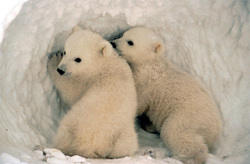Animal Kingdom
INVERTEBRATES (8 phylums)
Phylum Porifera (sponges)
*1st animals
*asymmetrical
*hermaphrodites
*sessile
*asexual reproduction-fragmentation, budding, gemmules
*sexual reproduction-most are hermaphrodites
Phylum Cnidarians (sea anemone, hydra, jellyfish)
*1st animals to move
*most are hermaphrodites
*radial symmetry
*simple nervous system
Phylum Platyhelminthes (flat worms)
*1st animals to have a head
*hermaphrodites
*bilateral symmetry
*simple nervous system
*1 body opening
Phylum Annelids (earthworms, leeches)
*segmented worms
*hermaphrodites
*bilateral symmetry
*nervous system with simple brain and nerve cord
Phylum Nematoda (roundworms)
*bilateral symmetry
*two openings
*about 1/2 are parasites
Phylum Mollusca (clam, oyster, octopus, scallop)
*have foot and mantle
*many have radula
*bilateral symmetry
*has a heart
*3 groups: bivalves, gastropods, cephalopods
Phylum Arthropods (crabs, lobsters, ants, bees )
*80% of all animals
*jointed appendages
*bilateral symmetry
*need oxygen ( gills, tracheal tubes, book lungs )
*metamorephosis
Phylum Echinodermata (sea urchin, sea cucumber, sea star, sand dollars)
*marine animals
*no brain, but has a nerve ring
*respiration: tube feet to take in oxygen
VERTEBRATES (1 phylum)
Phylum Chordata
amphibians
birds
fish
mammals
reptile
Favorite Animal:
polar bear
~ vertebrate
~Phylum Chordata
~Ursus maritimus
~lives in Artic Circle
~carnivore
~mating takes place in April and May
~polar bears generally have polygynous mating system
~after mating, the fertilized egg remains in suspended state for about four months
~walk around with its 4 legs, but will swim to get from ice to ice

